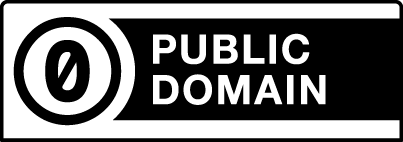General Biology Laboratory Booklet
by Martilias Farrell, Ph.D.
Keywords: Experimental Biology, Planaria, Microscopy

About the Book
This laboratory manual provides a diverse collection of experiments designed to immerse students in techniques mirroring those used in professional biomedical research. Students will explore fundamental enzyme kinetics, investigating how varying amylase concentrations and the introduction of chemical modifiers influence starch digestion rates. These labs emphasize quantitative analysis through colorimetric assays and densitometry using ImageJ software. The booklet also features studies with planaria, where students will assess how common substances affect locomotor activity and screen compounds for their impact on the remarkable regenerative abilities of these organisms, including generating concentration-effect curves. Additional activities guide students in using microscopy to observe microscopic life. Throughout these hands-on investigations, students will develop and refine crucial laboratory skills such as preparing serial dilutions, mastering precise pipetting techniques, and maintaining detailed, reproducible laboratory notebooks, thereby building a robust foundation in experimental design, data analysis, and the scientific method.
Chapters
- Note to the Reader
- Microscopic Life, Laboratory Notebooks and the Scientific Method
- Ecosystem Observation and Sample Collection
- Soil Core Analysis
- Microscopic Analysis
- Biochemical Analysis of Environmental Samples
- Enzyme Lab I
- Enzyme Lab II – Modifiers of enzyme rate
- Enzyme Lab III – Concentration Effect curve
- Planaria Locomotor Lab
- Planaria Regeneration Screen
- Concentration-Dependent Effects of Screen Hits on Planaria Regeneration
- Appendix A: Note for the Instructor
- Appendix B: Lab Notebook Format Entry Guide
- Appendix C: DIY Imager
- Appendix D: Using ImageJ To Quantify Images
- Image Citations
General Information
- Publication Year: 2025
- Edition: First
- Subject: Biology
- Latest File Update: December 2, 2025
License

This work is licensed under a Creative Commons Zero-Public Domain 1.0 Universal (CC0 1.0 Universal) as a part of PA-ADOPT, except where otherwise noted.
Usage
Readers
The eTextbooks created as a part of this program are provided in two formats: ePub and PDF. Please refer to our Reader Support section for guidance on which format may be best for you and the device(s) you use.
Instructors
If you are an instructor seeking to use this eTextbook in your own course(s) please feel free to download the ePub and/or PDF file(s) for your use, but make sure to complete our eTextbook Usage Survey (this information is used for program evaluation purposes).
If you are interested in making revisions and edits to this eTextbook please note that this is possible since the book is under a Creative Commons License, which allows you to remix, reuse, revise, and redistribute the eTextbook. Please refer to the Faculty Support Page, specifically looking at Remixing. You can download General Biology Laboratory Booklet Apple Pages File in order to use the original document to revise and remix the eTextbook for your purposes.
Citations
MLA: Farrell, Martilias. General Biology Laboratory Booklet. First, The Pennsylvania Alliance for Design of Open Textbooks (PA-ADOPT), 2025.
APA: Farrell, M. (2025). General biology laboratory booklet (1st ed.). The Pennsylvania Alliance for Design of Open Textbooks (PA-ADOPT).
Chicago: Farrell, Martilias. General Biology Laboratory Booklet. 1st ed. The Pennsylvania Alliance for Design of Open Textbooks (PA-ADOPT), 2025.
Peer Review
This eTextbook went through an Open Peer Review process. The peer review process used the Open SUNY Textbook Peer Review Guidelines, allowing peer reviewers to read the text carefully and evaluate the following:
- Educational Significance of Content including accuracy, appropriate and useful materials, valid and significant concepts, models, and skills, and key elements;
- Effectiveness as a Teaching Resource including a clear explanation of the concepts, alignment of materials to the learning process of the target audience, and alignment of the learning objectives with course goals; and
- Readability and Ease of Use including clarity and comprehensiveness, consistent writing style, readability and ease of use (logic, sequence, and flow), appropriateness for target readership level, and quality of Interactivity and multimedia learning objects.
As a part of the open peer review process, the public review conducted by Dr. Adedoyin Adeyiga is made available: Peer Review Document (PDF).